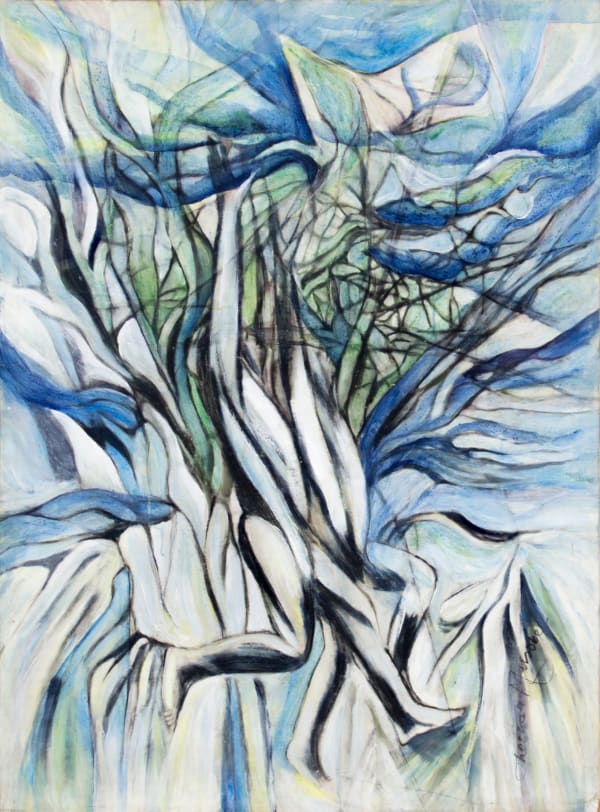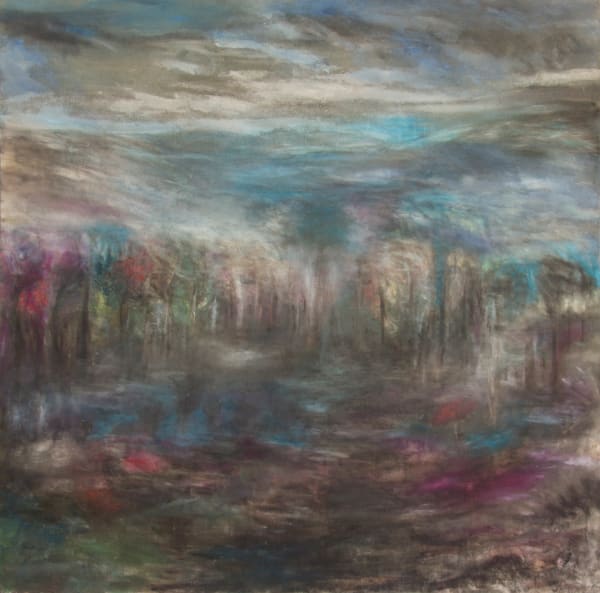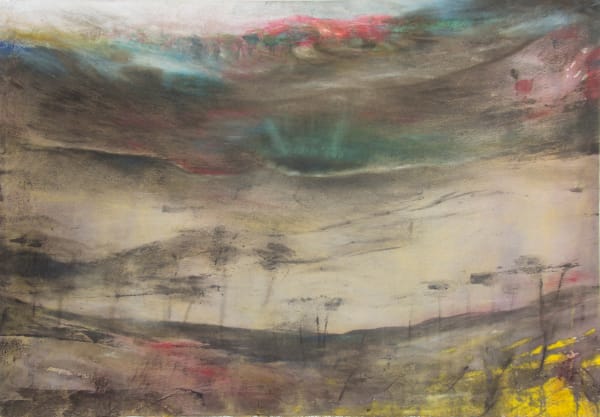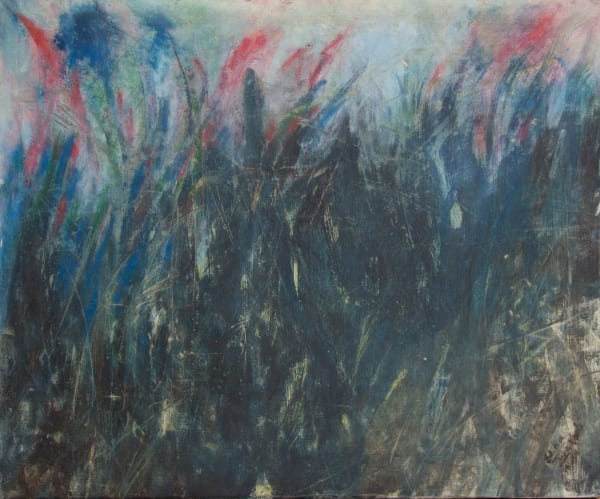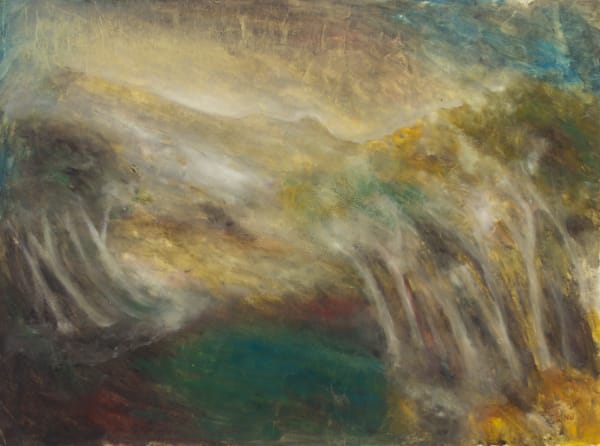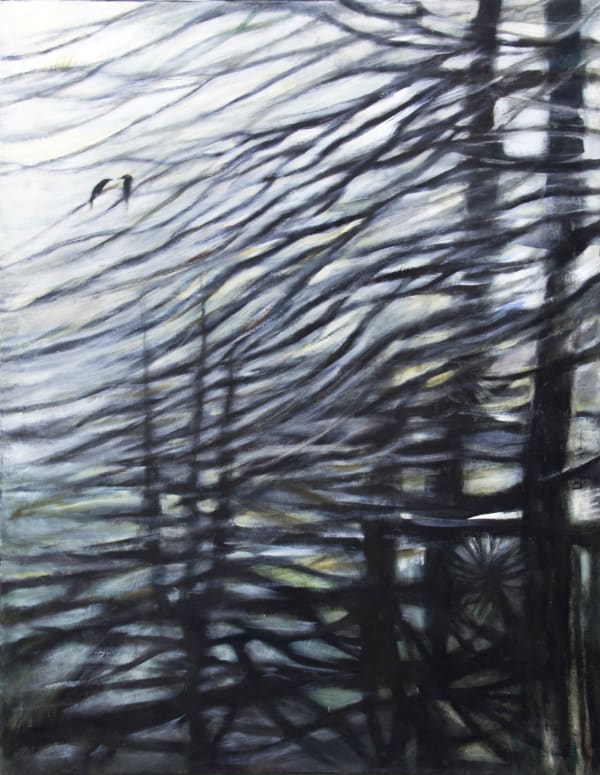A Retrospective of Three Artists: Theresa Musoke, Tabitha wa Thuku, Yony Waite: Circle Art Gallery
With more than 100 years of art-making between them, Yony Waite, Theresa Musoke and Tabitha Wa Thuku share a deep love and concern for nature and this has been a subject to which each artist has returned to often in their work. This exhibition brings together a selection of paintings and drawings from different periods of their practices, dating as far back as the 1980s, highlighting their continued consideration of the natural world around them.
Waite’s compositions display a sensitivity for the interplay between natural light and the darkened silhouettes of flora and fauna, intermingling the two in a way that sometimes renders the subjects indistinguishable from one another. As a result, her paintings often take on a semi-abstract quality, with the light, shadow and patterns taking centre stage.
Musoke’s approach to painting brings together the precision of drawing - her fine draughtsmanship is evident in her drawings in ink and watercolour on paper - with a looser painterly style. Her paintings often begin with dyeing her canvases, using the loose dye stains as a base for the animal groupings that feature prominently. Her works are often suggestive rather than descriptive, the forms emerging out of a fluid interaction of line, shape, movement, her animals and birds inseparable from their environments.
Wa Thuku’s landscapes possess a dreamlike quality that speaks of the artist’s affinity to the places from which they are drawn, rather than an attempt to depict a realistic space. Bearing titles such as A Universe in a Village, these expressive vistas distil the artist’s remembering of particular moments and experiences, combined with subtle movements of colour and texture. They are equally illusive and immersive, capable of transporting the viewer into places known and unknown.
Over and above their individual accomplishments as artists, Musoke, Wa Thuku, and Waite have all made significant contributions to the artistic landscape in Kenya and East Africa at large. Waite was the founder of the legendary Gallery Watatu in Nairobi, a space that offered opportunities to many artists and contributed to the emergence of many important artists from this region. Musoke has held teaching positions in various institutions throughout her career including Makerere University, Kenyatta University, and ISK. Wa Thuku, on her part has been involved in formal and informal teaching and mentoring activities including workshops with young mothers in urban communities in Nairobi, teaching in primary schools and leading children’s programs at RaMOMA. This exhibition is a celebration of their work as artists, and an assertion of their incontestable contribution to the artistic landscape of East Africa.
Please note red dots mean sold but yellow dots mean reserved and these works may still be available so please email danda@circleartagency.com or ring/whatsapp +254722672938 to check.
Best known for her expressive portrayals of the region’s abundant wildlife, Theresa Musoke is one of Uganda's foremost artists. Her suggestive paintings merge the forms and movements of animals with their environments, developing from a process that involves dying canvas then responding with acrylic and oil paint to the forms suggested by the dye-stains until they resolve into a unified composition.Musoke’s work first began to receive attention while she was an undergraduate student at the Margaret Trowell School of Fine Arts in Kampala, where she won the Painting Prize in 1965 and had a solo show at the Uganda Museum. After receiving her BA, Musoke worked for some time as an art teacher before receiving a scholarship to study for a postgraduate diploma in printmaking at the Royal College of Art in London. Following this, she went on to complete an MFA at the University of Pennsylvania.Musoke has been a highly influential figure in Kenyan and Ugandan art, not only for her celebrated visual practice, but also as a teacher. After completing her studies, Musoke returned to Kampala where she taught at Makerere University, before relocating to Nairobi in 1976. She lived in Kenya for over 20 years and taught at different institutions including the University of Nairobi, Kenyatta University, the International School of Kenya, and Kestrel Manor School. Throughout this time Musoke exhibited frequently in local galleries such as Paa Ya Paa, Gallery Watatu and the African Heritage House. She facilitated numerous informal artist workshops. This year her work was featured in the travelling group show Mwili Akili na Roho, at The Royal Academy, London and Haus Der Kunst, Munich.
Tabitha Wa Thuku (Kenyan, b. 1963)
Born in the year of Kenya’s Independence, Tabitha wa Thuku began her creative practice as a young, self-taught artist, and one of the only female artists of her generation. Now, with a career of over three decades, Wa Thuku has made a name for herself as a painter unencumbered by convention. Her works, which shift between figuration and abstraction, are distinguished by their earthy, smouldering palettes and intense textural qualities, often creating a strong sense of presence and place.Tabitha wa Thuku has created and exhibited consistently since 1988. She originally studied textiles and clothing technology at Kenya Polytechnic, then from 1996 to 1999 she attended the Buruburu Institute of Fine Arts. Wa Thuku has undertaken various workshops and residencies to develop a wide range of techniques, demonstrated in her extensive body of work. She has also worked in various organizations as an art educator, teaching and mentoring children and young artists.Wa Thuku has exhibited regularly throughout her career in Kenya and abroad, including in the Netherlands, Italy, Hong Kong and Denmark, and her work is included in private and public collections in Kenya, including those of the National Museum of Kenya, the Safaricom collection, PwC and MMC Africa Law.
Yony Waite (Kenyan, b.1935)
Yony Waite, now a Kenyan citizen, grew up on the Pacific Island of Guam. She studied Fine Art at the University of California where her tutor, Richard Diebenkorn, instilled in her a keen appreciation of the essential value of light. Waite later went to Japan to study the art of sumi-e brush painting where she developed a lasting love of ink as a medium.Alongside her work as an artist, Waite has been instrumental in establishing various art institutions in Kenya, most notably as co-founder of Gallery Watatu in 1968 which was sold to Ruth Schaffner in 1984. She went on to establish Wildebeeste Workshops and the Mkonokono women’s group in Lamu where she still lives.Waite has a strong international following and has exhibited extensively in Japan, the USA and Kenya.
